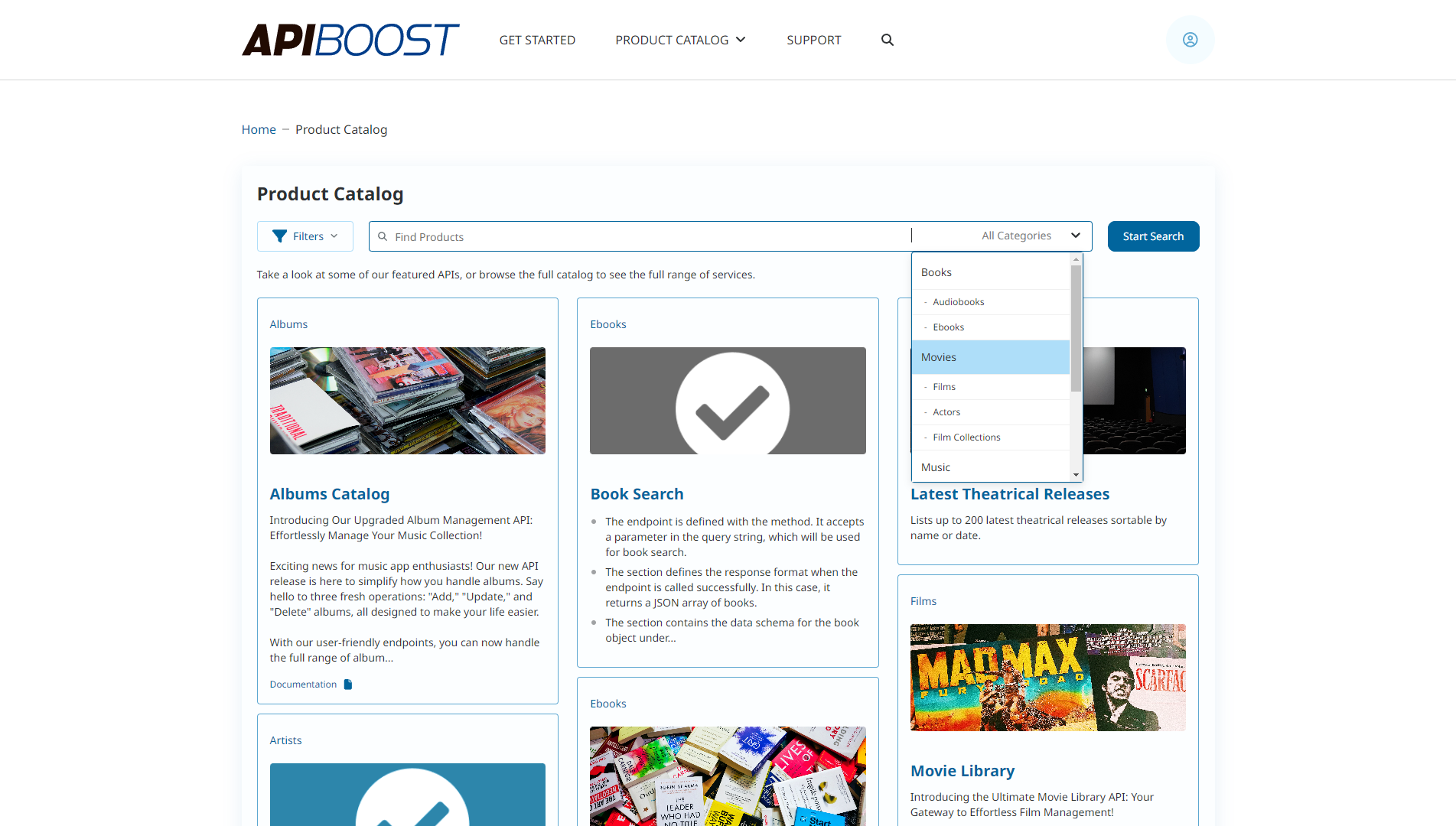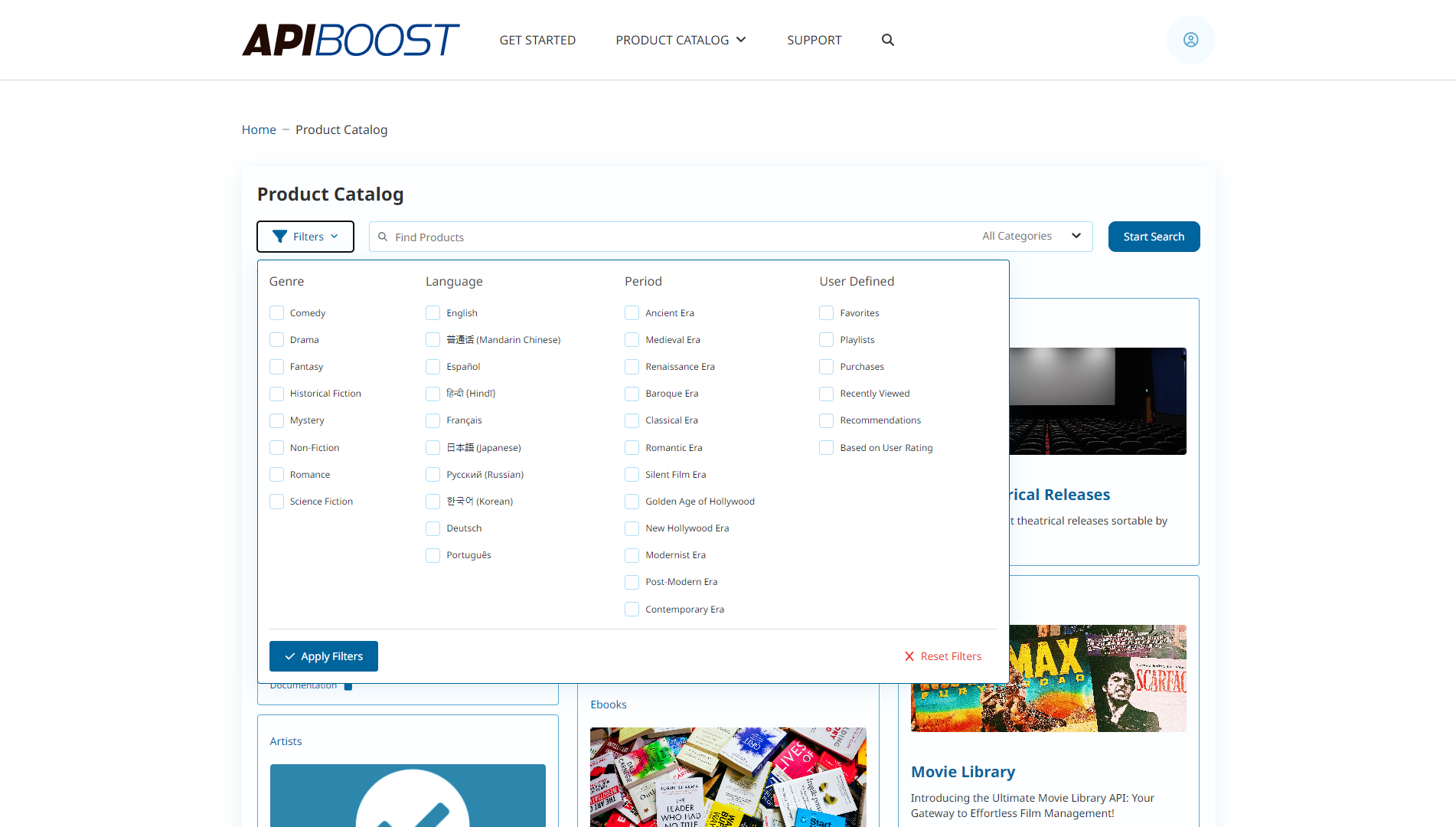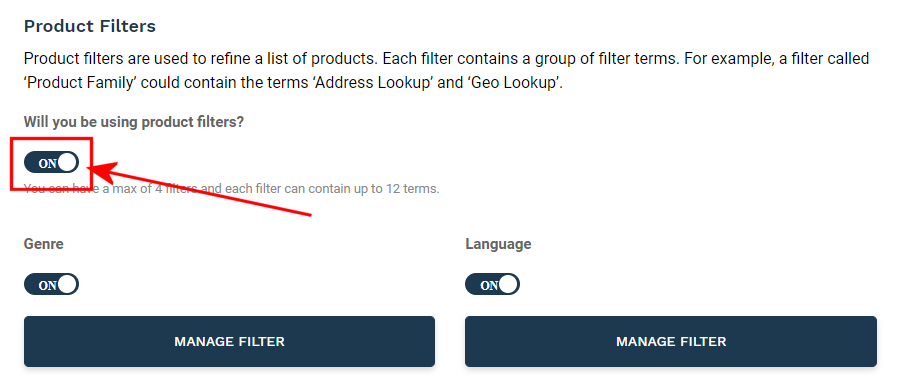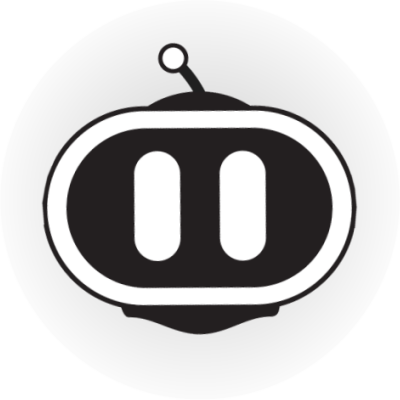Add Product Filters
What are Product Filters?
Filters are a secondary method of cataloguing API products. While an API product can only have one primary category, there's no set limit to how many filter tags it may have. A best practice for using API filters is creating filters that apply broadly to APIs in different categories.
In the example below, the primary categories for “Books” and “Movies” are visible with their subcategories.
Note: While nesting categories is allowed, each API Product is still limited to one, regardless of the category’s nested status.

The large API Product Catalog with categories menu expanded.
On the left of categories is the filters menu, shown below. While “Books” or “Movies” may work as primary categories, tags such as “Genre” or “Language” would be better suited as filters. The reason is while neither filter is specific to a category, they’re relevant to both. Books and Movies have Genres and Languages in common. This broad approach to categorization helps the user find the API Products they need first by primary category and then drilling down by relevant filters.

Using filters in the Product Catalog
Not every catalog can be as clear cut or simplified as the examples above. It may not even make sense for an organization to use filters (using small catalog instead). These are only a few things to consider when building an API catalog.
Choose Your Filters
Administering product filters is a process exactly the same as product categories. The main difference is even if the user chooses to enable filters, there’s more options to use some or all of them.
First though, is the main toggle. Enabling or disabling this switch will enable or disable filters entirely:

The toggle for Product Filters
TIP: Effective filters work across categories, but the best categories are truly unique.
